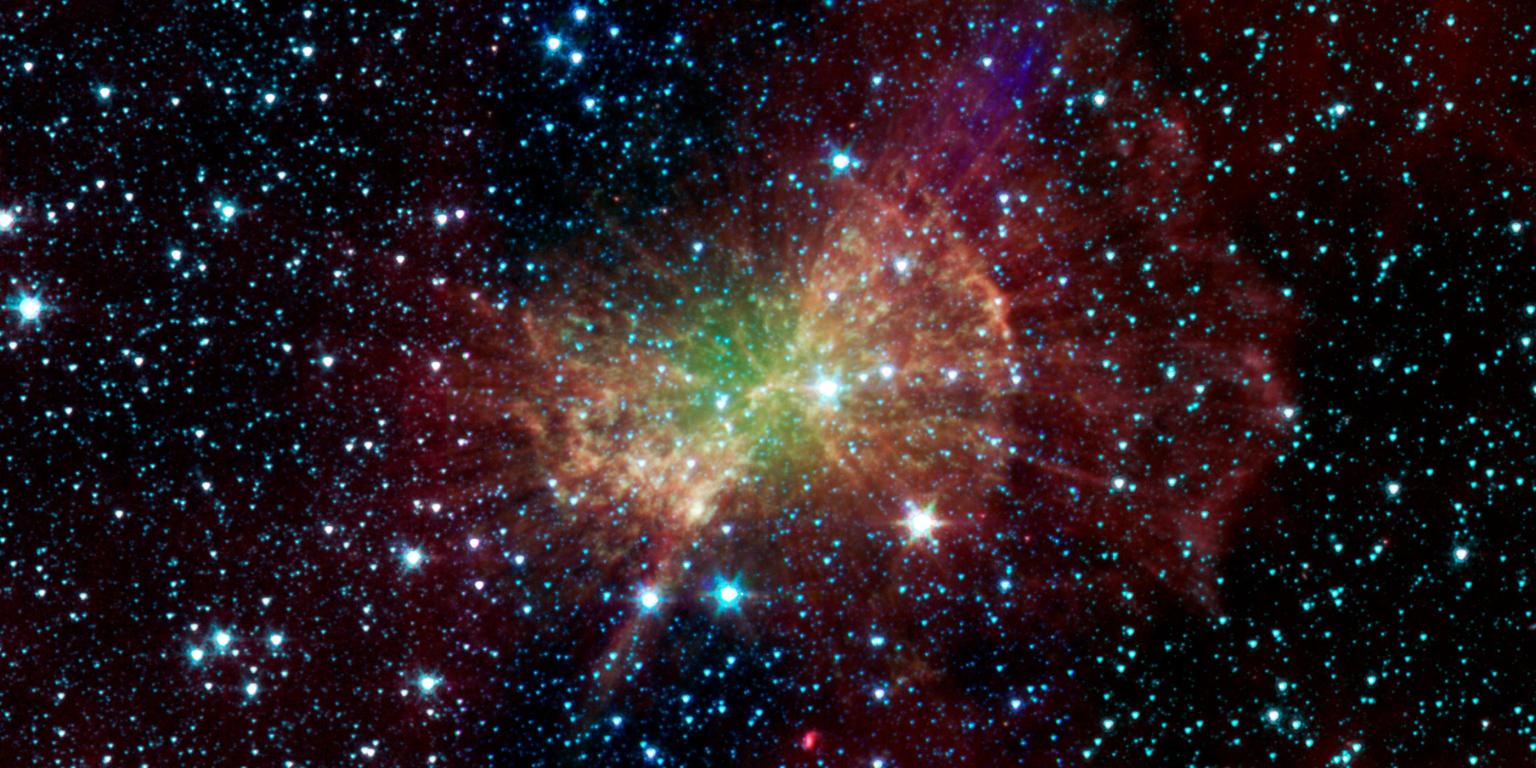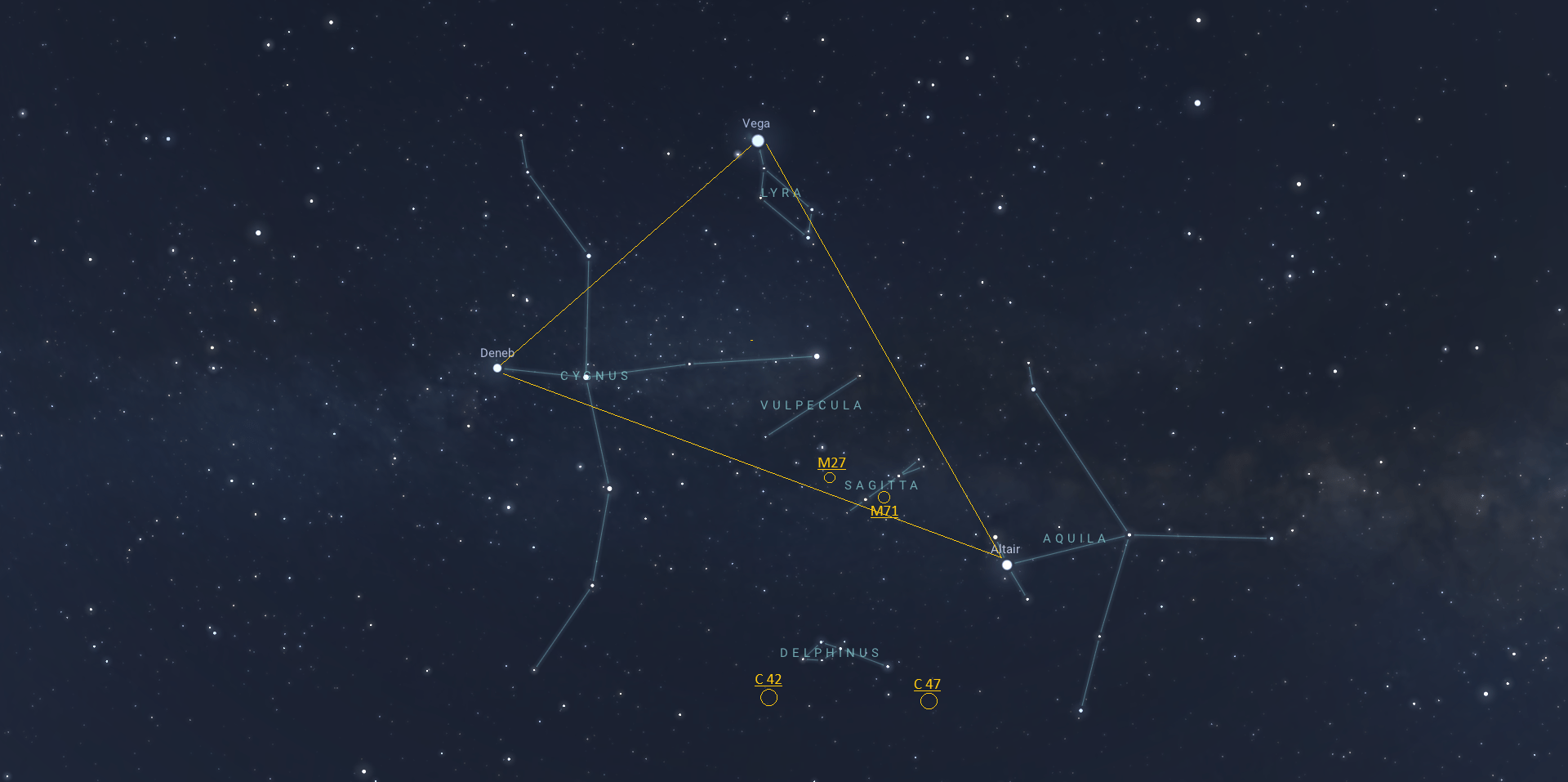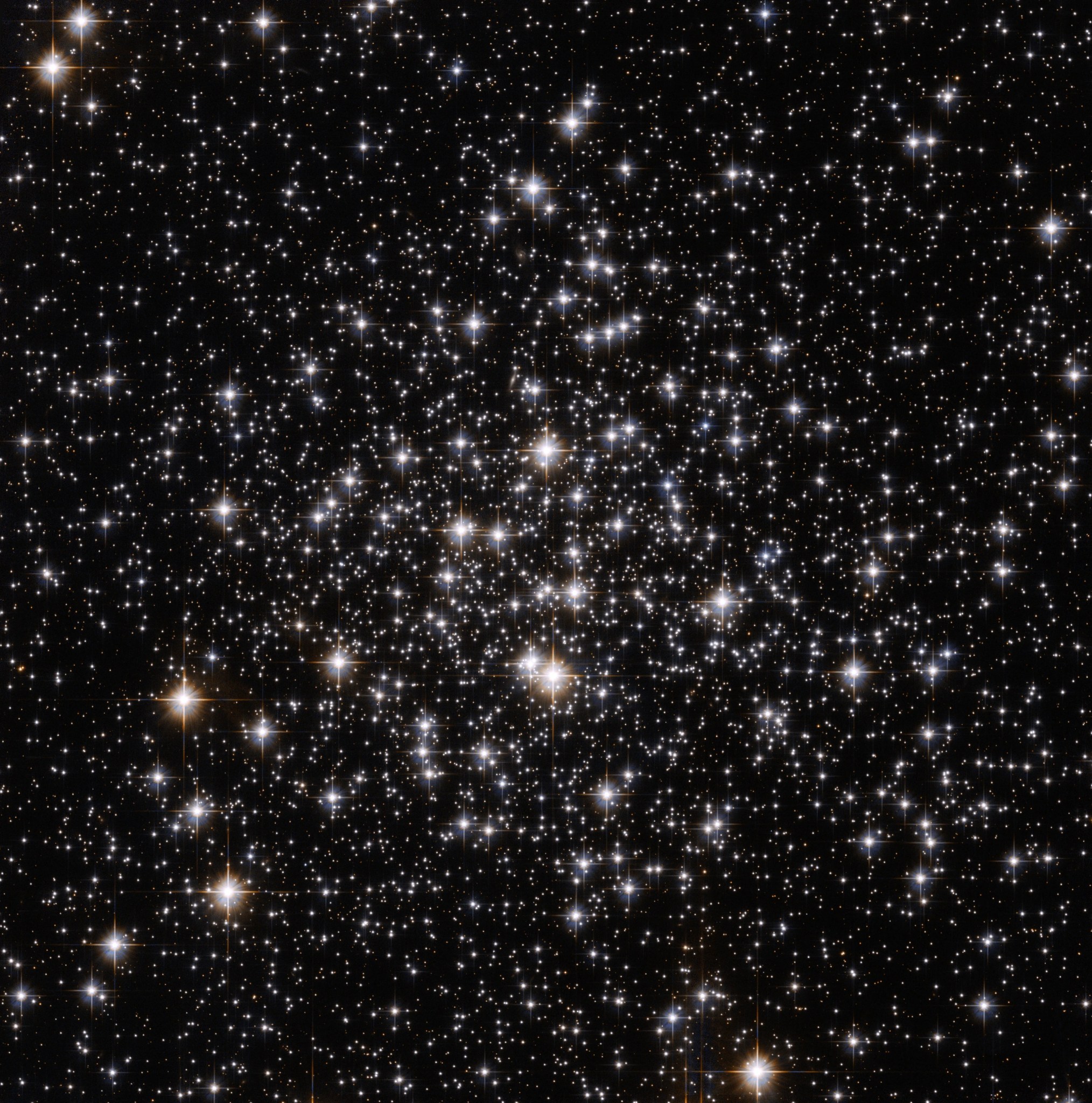
NASA/JPL-Caltech/Harvard-Smithsonian CfA
August skies bring the lovely Summer Triangle asterism into prime position after nightfall for observers in the Northern Hemisphere. Its position high in the sky may make it difficult for some to observe its member stars comfortably, since looking straight up while standing can be hard on one's neck! While that isn't much of a problem for those that just want to quickly spot its brightest stars and member constellations, this difficulty can prevent folks from seeing some of the lesser known and dimmer star patterns scattered around its informal borders. The solution? Lie down on the ground with a comfortable blanket or mat or grab a lawn or gravity chair and sit luxuriously while facing up. You'll quickly spot the major constellations about the Summer Triangle's three corner stars: Lyra with bright star Vega, Cygnus with brilliant star Deneb, and Aquila with its blazing star, Altair. As you get comfortable and your eyes adjust, you'll soon find yourself able to spot a few constellations hidden in plain sight in the region around the Summer Triangle: Vulpecula the Fox, Sagitta the Arrow, and Delphinus the Dolphin! You could call these the Summer Triangle's "hidden treasures" - and they are hidden in plain sight for those that know where to look!

Vulpecula the Fox is located near the middle of the Summer Triangle, and is relatively small, like its namesake. Despite its size, it features the largest planetary nebula in our skies: M27, aka the Dumbbell Nebula! It's visible in binoculars as a fuzzy "star" and when seen through telescopes, its distinctive shape can be observed more readily - especially with larger telescopes. Planetary nebulae, named such because their round fuzzy appearances were initially thought to resemble the disc of a planet by early telescopic observers, form when stars similar to our Sun begin to die. The star will expand into a massive red giant, and its gases drift off into space, forming a nebula. Eventually the star collapses into a white dwarf - as seen with M27 - and eventually the colorful shell of gases will dissipate throughout the galaxy, leaving behind a solitary, tiny, dense, white dwarf star. You are getting a peek into our Sun's far-distant future when you observe this object!

Sagitta the Arrow is even smaller than Vulpecula - it's the third smallest constellation in the sky! Located between the stars of Vulpecula and Aquila the Eagle, Sagitta's stars resemble its namesake arrow. It too contains an interesting deep-sky object: M71, an unusually small and young globular cluster whose lack of a strong central core has long confused and intrigued astronomers. Your own views very likely won't be as sharp or close as this. However, this photo does show the cluster's lack of a bright, concentrated core, which led astronomers until fairly recently to classify this unusual cluster as an "open cluster" rather than as a "globular cluster." Studies in the 1970s proved it to be a globular cluster after all - though an unusually young and small one! It's visible in binoculars, and a larger telescope will enable you to separate its stars a bit more easily than most globulars; you'll certainly see why it was thought to be an open cluster!
Delicate Delphinus the Dolphin appears to dive in and out of the Milky Way near Aquilla and Sagitta! Many stargazers identify Delphinus as a herald of the fainter water constellations, rising in the east after sunset as fall approaches. The starry dolphin appears to leap out of the great celestial ocean, announcing the arrival of more wonderful sights later in the evening. With a large telescope and dark skies, you can pick out globular clusters Caldwell 42 and Caldwell 47.
Want to hunt for more treasures? You'll need a treasure map, and the Night Sky Network's "Trip Around the Triangle" handout is the perfect guide for your quest!
Originally posted by Dave Prosper: August 2022
Last Updated by Kat Troche: April 2024






